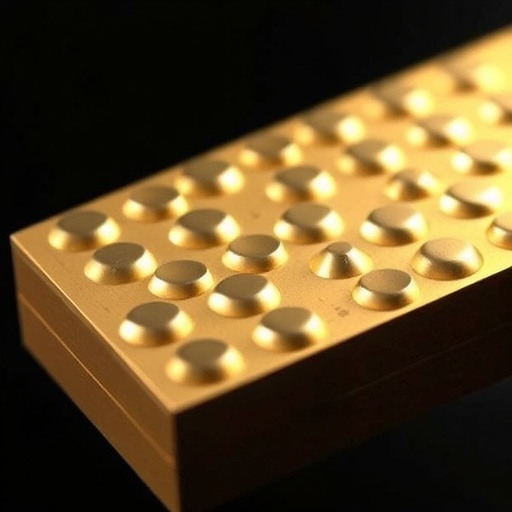Innovations in battery technology are vital for the future of portable energy storage, particularly as the world increasingly moves towards renewable energy sources. Among the most promising advancements is the development of anode-free magnesium (Mg) metal batteries. They present a unique solution that enhances energy density by eliminating the need for prefabricated anodes, creating a more efficient battery design. With the rising demand for energy-efficient systems, researchers are exploring novel strategies to tackle the critical challenges of dendrite formation that significantly impedes the performance and safety of such batteries.
In traditional battery designs, anodes are typically constructed from bulk materials, often contributing to the overall weight of the battery. In the case of magnesium metal batteries, a bare current collector made of copper or zinc serves as the anode. During the charging phase of the battery, magnesium ions from the cathode deposit onto this collector, creating a metallic layer that functions as the anode. This innovative approach provides a significant advantage: it reduces the material weight, making the batteries more compact and lower in production costs. However, one of the major technological hurdles facing this system is the propensity for dendrite growth—a phenomenon that can lead to short circuits and ultimately reduce the efficacy and safety of the battery.
To address these issues, a team of researchers led by Associate Professor Hee-Dae Lim from Hanyang University in South Korea has pioneered a novel facet-guided metal plating strategy. This innovative approach aims to control the deposition of magnesium onto the anode surface, enhancing battery performance while simultaneously suppressing dendrite formation. Dr. Lim elucidates the fundamental concepts behind this groundbreaking research, explaining that the team focused on a “crystallographic strategy” that employs a facet-oriented zinc host with a particularly tailored surface chemistry.
In standard practice, the materials chosen for battery current collectors are generally polycrystalline. Though widely utilized, this type of structure presents significant challenges due to its random grain orientation and dense grain boundaries that can create numerous hotspots during metal deposition. These microscopic inconsistencies can lead to vertical growth of magnesium, which, in turn, contributes to the formation of dendrites that degrade the battery’s performance over time. The research team made decisive strides by opting for zinc as the host metal, recognized for its structural similarity to magnesium, which enhances compatibility during the plating process.
The research group employed meticulous engineering techniques to expose a thermodynamically stable (002) facet of zinc, characterized by a flat and smooth surface. By aligning the host material in this way, magnesium can spread uniformly across the surface layer, effectively reducing the likelihood of hotspots that contribute to dendrite growth. To create this facet, the team subjected bare zinc foil to thermal annealing. This process not only enhances the crystalline structure but also reinforces the surface properties necessary for effective magnesium deposition.
Following the thermal treatment, the bare zinc foil was further subjected to reactive ion etching to create a polished surface known as P-Zn(002). This critical step involved minimizing the effects of grain boundaries—a significant contributing factor to uneven growth during the magnesium plating process. Experimental tests have shown that this finely tuned P-Zn(002) surface significantly mitigates dendrite formation and enhances the stability of the battery. The uniform horizontal growth of magnesium observed in tests suggests that the crystal orientation and surface chemistry played a crucial role in achieving desired outcomes.
The research findings highlight a compelling achievement, as the anode-free magnesium cell employing the P-Zn(002) substrate successfully retained approximately 87.58% of its original capacity after over 900 cycles at a current density of 200 mA/g. This level of performance is noteworthy, particularly when compared to traditional magnesium and lithium-based batteries that often struggle with capacity retention and failure under similar conditions.
Dr. Lim emphasizes that the implications of this research extend beyond mere laboratory success; it proposes a new conceptual framework for next-generation magnesium-metal batteries with high energy densities. Such technological advancements are aligned with future energy requirements, particularly for the evolving landscape of renewable energy systems and smart grid infrastructure. The work exemplifies how strategic control at the atomic level can yield significant breakthroughs in energy storage technology.
Moreover, the study underscores the importance of interdisciplinary approaches bridging materials science, electrochemistry, and chemical engineering. By merging insights from these fields, the research team has contributed valuable knowledge that may stimulate further innovations in battery technology, while also addressing pressing concerns regarding sustainability and efficiency in energy storage systems.
In conclusion, this pivotal research led by Professor Hee-Dae Lim and his team demonstrates an impressive leap forward in anode-free battery technology. By employing facet-guided metal plating techniques, they have illustrated the potential for crystallographic control to create stable anode surfaces, paving the way for practical applications of magnesium metal batteries. As researchers continue to innovate and refine these technologies, the future of energy storage appears promising, a vital component for advancing the utilization of renewable energy and meeting the demands of a sustainable future.
Subject of Research: Magnesium metal batteries
Article Title: Facet-Guided in-Plane Metal Plating via Accelerated Surface Diffusion in Mg Metal Batteries
News Publication Date: 10-Sep-2025
Web References: https://doi.org/10.1002/aenm.202503832
References: 10.1002/aenm.202503832
Image Credits: Hee-Dae Lim from Hanyang University
Keywords
- Anode-free batteries
- Magnesium metal batteries
- Dendrite formation
- Energy storage technology
- Crystallographic control
- Electrochemistry
- Nanotechnology
- Metal plating techniques
- Renewable energy systems
- Materials science




